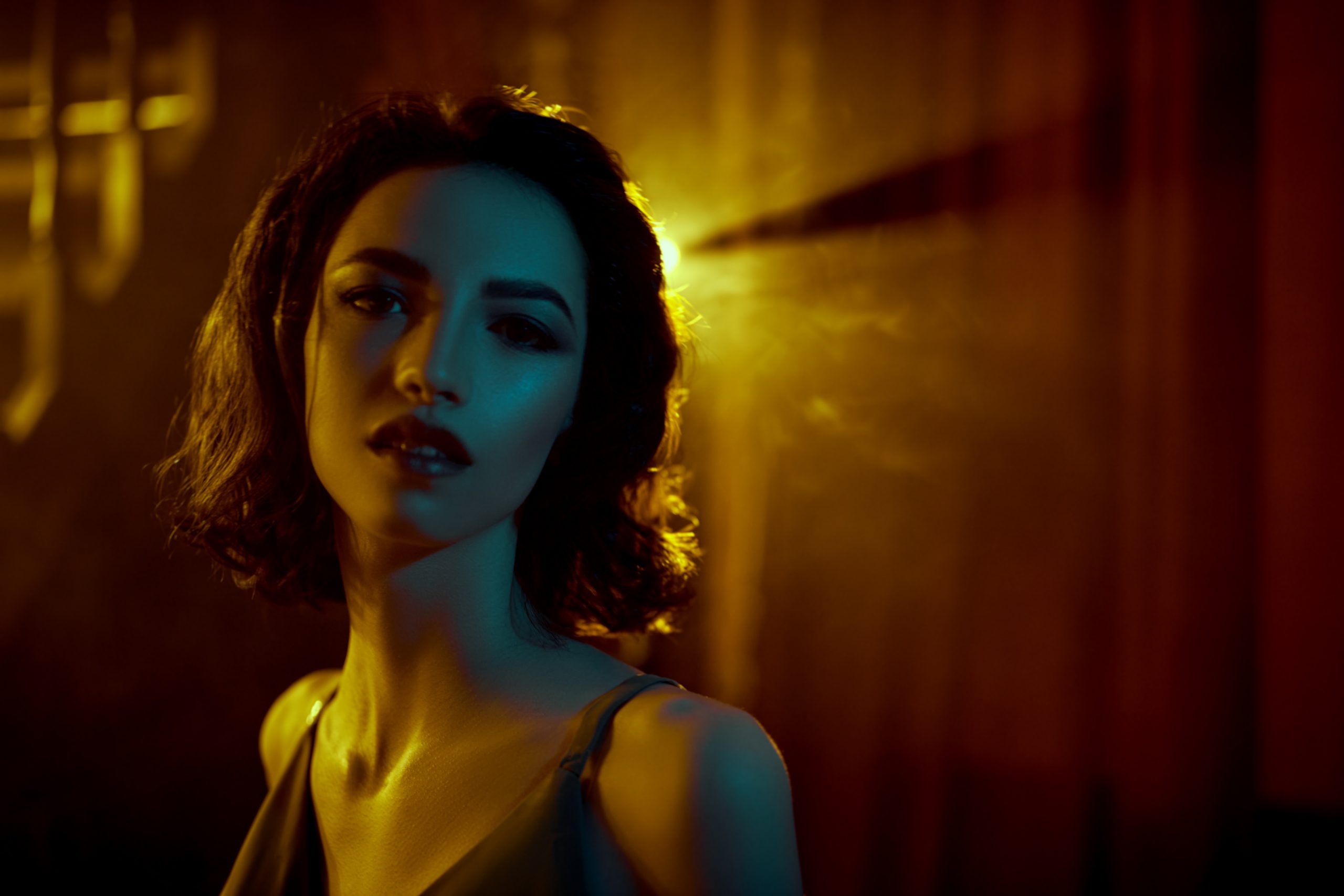
On January 2, 2022, I embarked on my second year-long binge of an artist’s work (52 weeks, 52 films). I first did a project like this in 2016 when I watched a different Woody Allen movie every week for a year, from his first film to his latest. For this project, I focused not on a filmmaker, but on a studio, one where a singular artist provided the foundation: Walt Disney.
For such an expansive subject, parameters had to be in place. With this binge-watching project, I narrowed the focus on the 20th-century works, starting with the first sync-sound animated cartoon (“Steamboat Willie” from 1928) and concluding with an entirely computer-generated work (2000’s “Dinosaur”). From simple line drawings to complex renderings of entire worlds, the history of animation would unfold over the course of a year. Every week, I’d watch a Disney animated feature and write a review on Letterboxd with the main rule being that I couldn’t reference anything I hadn’t watched yet. Every film had to be written about as though it were brand new (while still writing in the past tense).
When writing reviews for these films, I often referred to the auteurs as “the Disney artists.” Even though he rarely took director credit, Walt had such a stranglehold on every creative decision and many artists had been assigned certain characters in the process. Part of the excitement from this project came out of watching hours of documentaries and commentary tracks, particularly in the first half of the year. There are countless docs on the influence of Gustaf Tenggren, whose gothic designs permeate all the backgrounds of “Snow White” and “Pinocchio.” Obviously, there’s the Nine Old Men, Disney’s core group of animators from the early days, many of whom stayed on until 1981. Of course, the Sherman Brothers, known for their compositions in “Mary Poppins,” “The Jungle Book” and many more during that period. Finally, the importance of Alan Menken and Howard Ashman. Without them, “The Little Mermaid” might’ve been the last nail in the coffin for the studio’s animation department.

It’s a rich history—the triumphant early years, the lackluster WWII-era “package films,” the comeback with “Cinderella” in 1950, the TV shows, the groundbreaking “True Life Adventures,” the opening of Disneyland (I did watch that TV special with all the technical mishaps), the unfinished collaboration with Salvadore Dali (“Destino”), the directionless decades that followed Walt’s death, and the rise from the ashes with “Who Framed Roger Rabbit?” and “The Little Mermaid.”
Also like the Allen project, though, Disney courts controversy, even today, long after he’s passed. Many condemn him as an outright racist, chauvinist, and antisemite, yet many critics and Disney scholars still refute those claims. It’s true that racism and crude characters modeled after offensive stereotypes were a staple of many animated films during the ‘30s and ‘40s. All the animation studios at the time had been guilty of it.
Scholars will often debate the merits and problems with Walt’s bigger-than-life personality. What cannot be refuted is that he was staunchly anti-Union and was not above naming names at the McCarthy hearings to single out individuals who tried to rally for better working conditions at the Disney studios in the ‘40s. There also existed an all-male hierarchy within the studio; the men got all the creative work while the women were relegated to the ink-and-paint departments. Disney also ignored the changing outside world, still only casting lily-white actors in all the starring and supporting roles, well into the ‘60s.
Speaking of which, you might be wondering how I watched “Song of the South.” It’s out there if you know where to look. There are copies you can get on Amazon, provided you have the right kind of DVD player. Or you can invest in a used Laserdisc player and get the Japanese import. There are ways, but Disney has largely kept the film under wraps since its last theatrical run in 1986. I watched the Laserdisc version.
I had an extra “special feature” gift to go with it, though. During lockdown in 2020, the late great film critic Sergio Mims, who died on October 4th, 2022, recorded a commentary track for his friends to listen to when watching the film (however they happen to be watching it). He joked about doing it and I encouraged him to go ahead and record one. So he did! It’s a great companion piece from a guy who knew his history, acknowledging its racist roots (Disney ignored NAACP recommendations when producing the film, preferring to embolden the stereotype of the “Happy Slave”), its technical accomplishments (many), but also condemning Disney Studios for never releasing it on video in the U.S. (FYI, you can download an mp3 of the commentary track on the Director’s Club podcast and the Movie Madness podcast. Highly recommended.)
How you accept these films depends on how far deep you’re willing to go when watching them in context with the time period. While today, many of the damaging stereotypes are hard to watch without wincing, back then no one was having the tough conversations about race, nationality, and religious tolerance, except in terms that put America above all else. Bing Crosby and the like were still wearing blackface in their musicals, and no one questioned it. It’s no wonder that the Disney studios released many of their shorts, features, and older television shows from the vaults on DVD for a brief period in the early 2000s and haven’t released them since. The studio today knows it has a troubled past and has been doing what they can to correct it, though not without stumbling (more on that in a moment).
As with the previous project, many films become greater or less appreciated when watched in order of their release. Watching everything that came beforehand can alter your expectations and change your mind about certain works. Throughout, I had reappraisals for many films that I had somewhat dismissed in the past. “One-Hundred-and-One Dalmatians” stands out now as an artistic high mark as the artists dared to create a look that flew in the face of everything before it, much to Walt Disney’s chagrin. “The Three Caballeros” and “Alice in Wonderland” are wonderfully weird creations bursting with creative energy that would rarely be seen again. On the flip side, I know I’m supposed to love “Mary Poppins” unconditionally, but it just doesn’t hit me the way it does everyone else. And “The Sword in the Stone” was worse than I remembered, the one major blight on an otherwise amazing run of films between 1950 and 1970.

I picked a helluva year to do this. It started in January with the “Celebrating Mickey” Blu-ray, which contains “Steamboat Willie” as well as ten other Mickey Mouse cartoons through the decades. The disc then culminates with the Oscar-nominated “Get A Horse!” (2013), one of my favorite animated films of recent years, and which depicts the Mickey Mouse cartoon style of the ‘20s fighting for screen space against a more modernized 3-D animation style, with hilariously disastrous results. This 100-minute set of cartoons would be a primer of everything to come, watching the animation techniques change and grow, with the most famous of all Disney characters at its center.
After that, of course, comes the Great Five: ”Snow White and the Seven Dwarfs,” “Pinocchio,” “Fantasia,” “Bambi,” and “Dumbo.” Also squeezed in there was the promotional film released between “Fantasia” and “Dumbo,” the behind-the-scenes promotional feature, “The Reluctant Dragon,” which I had never seen. I had many blind spots during this period (February through May), but the WWII propaganda film “Victory Through Air Power,” which I watched at the end of February, happened to land on the same week Putin invaded Ukraine. While the film itself is little more than a glorified, theatrically released infomercial on the advantages of air power during wartime, Disney Home Video packaged it in its “Disney Treasures” series with a collection of satirical political cartoons that would greatly offend everyone today. Culture wars and world wars collided for this project in this one particular week.
Around the same time, in early March, Disney was coming under fire for not doing enough to completely denounce Governor DeSantis’ heinous “Don’t Say Gay” bill in Florida. When it came time to make more than a performative stand, they simply danced around the issue. I remember the frustration and the anger everyone felt toward this corporation that had been trying to amass some goodwill by casting more POC in their films and seemingly supporting gay rights in the recent past. It wasn’t easy to keep going with this, but it became part of the experience of studying Disney’s past and present. They’re still trying to be everything to everyone but have yet to crack the code on how to make it work.
On a lighter note, in late June, when I had to watch “The Aristocats,” I decided to fulfill a childhood wish I had when, in 1981, my sister took me to see a double feature at the Arlington Theater: “The Aristocats” and Disney’s James Bond superhero spoof, “Condorman.” We didn’t stay for the second feature, much to my dismay. My entire family refused to take me to see that film. So, after I watched “The Aristocats” this past June, I decided to fork over $1.99 for an Amazon Prime rental of a pan-and-scan stream of “Condorman” to fulfill that bit of childhood neglect. My parents were right all along. The eight-year-old me would not have liked that film any more than the adult me.
The week I watched “The Little Mermaid” in mid-September happened to be around the same time Disney released the teaser for this year’s murky-looking live-action remake. Speaking of remakes, that also happened to be around the time Robert Zemeckis’ live-action remake of “Pinocchio” had been released. If there’s one thing I knew I didn’t need going into 2022, it was not one, but two more remakes of “Pinocchio” to sit through. Enough already!

Then came October.
As stated before, on October 4, Sergio Mims died. Nobody saw that coming and it was the first time a dear friend of mine had passed away so suddenly. On October 8th, I turned 50 and had a lovely birthday celebration at a drive-in theater in Indiana. On October 10th, my dad was taken to the hospital after a fall that cracked his head. After about a week, he needed more than stitches and the prognosis was getting worse, then better, then worse again. This particular week, I had to watch “The Lion King,” a film I’ve always loved, but this time it had a more profound effect on me. There was still more to say and more to do, but am I going to be like Simba soon? “Nah. He’ll pull through. We’ve been through this hospital stuff before.”
The following week saw more trips to the hospital for myself, my mom, aunt, niece, fiance, and my sisters. On Saturday, October 22, I made a point of staying home and getting work done that had been piling up, starting with that week’s Disney movie, “A Goofy Movie,” in which Goofy and his teenage son take a cross-country road trip and end up bonding during some comical and cataclysmic events. It turned out to be a much better movie than I remembered, one that I’m glad I watched when I did. “The Lion King” and “A Goofy Movie” had been released almost a year apart, which means they were in various stages of production almost simultaneously. Why did the Disney artists focus on father/son relationships during this time? The next day, on October 23rd, my father passed away in his hospital bed, surrounded by his family.
The next two films, “Pocahontas” and “Toy Story,” had me viewing them through different lenses. The main conflict in “Pocahontas” had to do with our heroine defying her father, who had different wishes for his daughter. In “Toy Story,” though it is never mentioned, the character of Andy is noticeably fatherless. In the days following my father’s funeral (or celebration of life, which it most certainly was), I went to the screening of “Guillermo Del Toro’s Pinocchio,” which turned out to be my favorite film of 2022, the reason of which should be obvious for anyone who’s seen it. Apparently, I really needed that particular “Pinocchio” at that particular time.
Finally, the year ended with “Fantasia 2000” and “Dinosaur.” While both may have their flaws (especially the latter), I was thankful I didn’t have to sit through another literary adaptation or bit of folklore with a plucky hero/heroine or a Lite FM soundtrack. A fine decade for the studio, sure, but like watching all the “package” films of the ‘40s week after week, a weekly dose of ‘90s Disney can leave one fatigued after a while. This final pair of movies felt like breaths of fresh air. They must’ve been for the artists who made them as well.
I’m happy I took this journey and that I now own a few of the controversial, out-of-print DVD titles that will likely stay that way. Disney is all-American, in the best and worst sense. It aims for greatness, but its past and present are at odds with itself. The artistic leaps in every decade and the talent involved throughout its history makes for an inspiring and hopeful story. The universal themes of its films have a way of reaching us at critical times of our lives. For better or for worse, they still hold power.
Please visit my Letterboxd page to see my rankings of these films and read the reviews.




